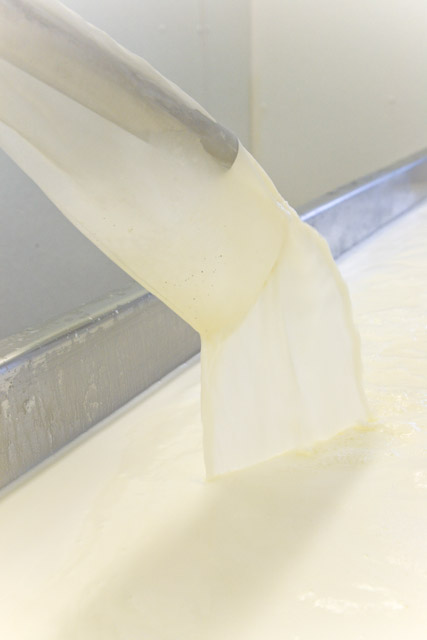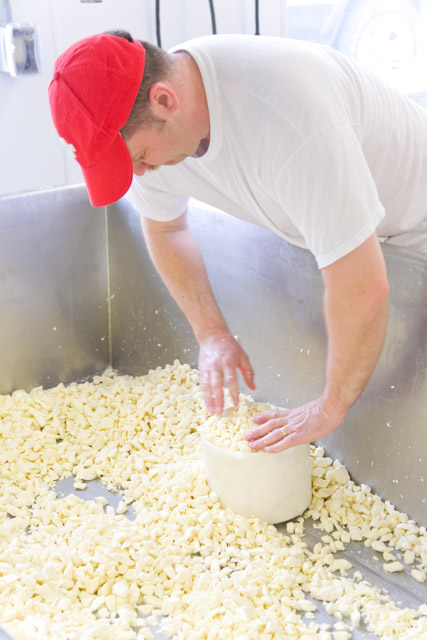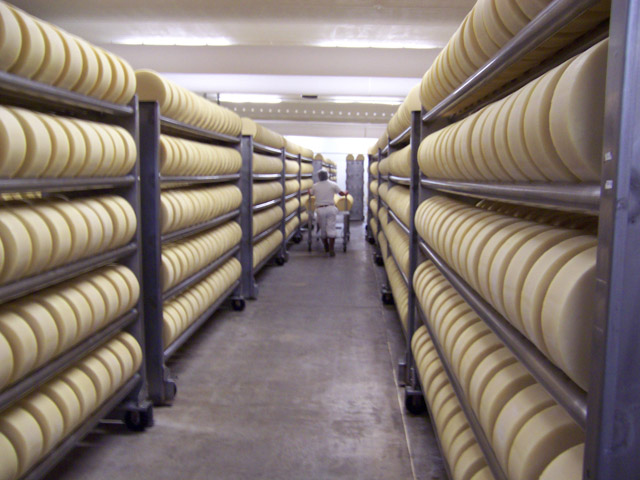Ever Wondered How Cheese Is Made?
By Erika Kubick in Food on Jan 16, 2014 8:15PM
Cheese is the most glorious of all things. From crumbly fresh chèvre to hard, grateable Parmigiano-Reggiano, we love it all. The details for each cheese are different, but we thought we'd give you a gentle overview of the magic that is cheese making.
It all starts with the milk.
It takes about 10 pounds of milk to make one pound of cheese. Only the highest quality milk is acceptable for cheese making. The breed of animal, season, climate and geography will affect the milk and the resulting cheese. Before the process can begin, the milk is tested for purity. It is then weighed and possibly pasteurized. Before moving forward, the milk is brought to the necessary temperature for the desired style of cheese.
Give it some culture.
A “good” bacteria, known as starter culture, kicks off a chemical process: the milk sugar, lactose, is converted into lactic acid which changes the pH level. This occurs when the milk sours or by adding starter culture. Coagulation begins and the solid curds separate from the liquid whey. Rennet is often added as well, which also helps bind the curds.
Cutting the curds
Once formed, the curds are cut, which further expels the whey. It also largely determines the resulting texture of the cheese. For example, soft cheeses such as brie and camembert are hardly cut at all, while harder cheeses such as gruyere are cut very fine. The curds are also cooked, expelling more moisture and leaving a tightly formed curd.
Press it down
The cheese is put into a mold, which will give it the characteristic shape, such as the basket weave pattern of a Manchego cheese. The wheels are pressed once more to expel all the remaining liquid and complete the formation of the curds. Most cheeses are pressed for 3 - 12 hours.
Make it salty
Salting the cheese adds flavor and acts as a preservative. The salt can be added directly into the curds or on the outside of the wheel. The salt pulls moisture out of the cheese, which helps create a rind, preparing the cheese for its lengthy aging adventure. Larger wheels of cheese have too great a surface area to salt by hand, so sometimes they are submerged in brine. They must be air dried and turned to remove excess surface moisture. Some cheeses, like feta, never leave their brine and their journey ends here.
The final touches
Before heading into heavily controlled rooms where they will age and ripen, the cheeses are sometimes washed or injected. Some cheeses are periodically cured in a solution of brine and/or wine, beer, brandy or spices. Other cheeses are smeared with bacteria to impart strong flavors and aromas and ensure proper development of bacteria.Some blue cheeses are injected with mold that develops as the cheese ages, but this must be done while the curds are still loosely pressed.
And that is how a baby cheese is born.





